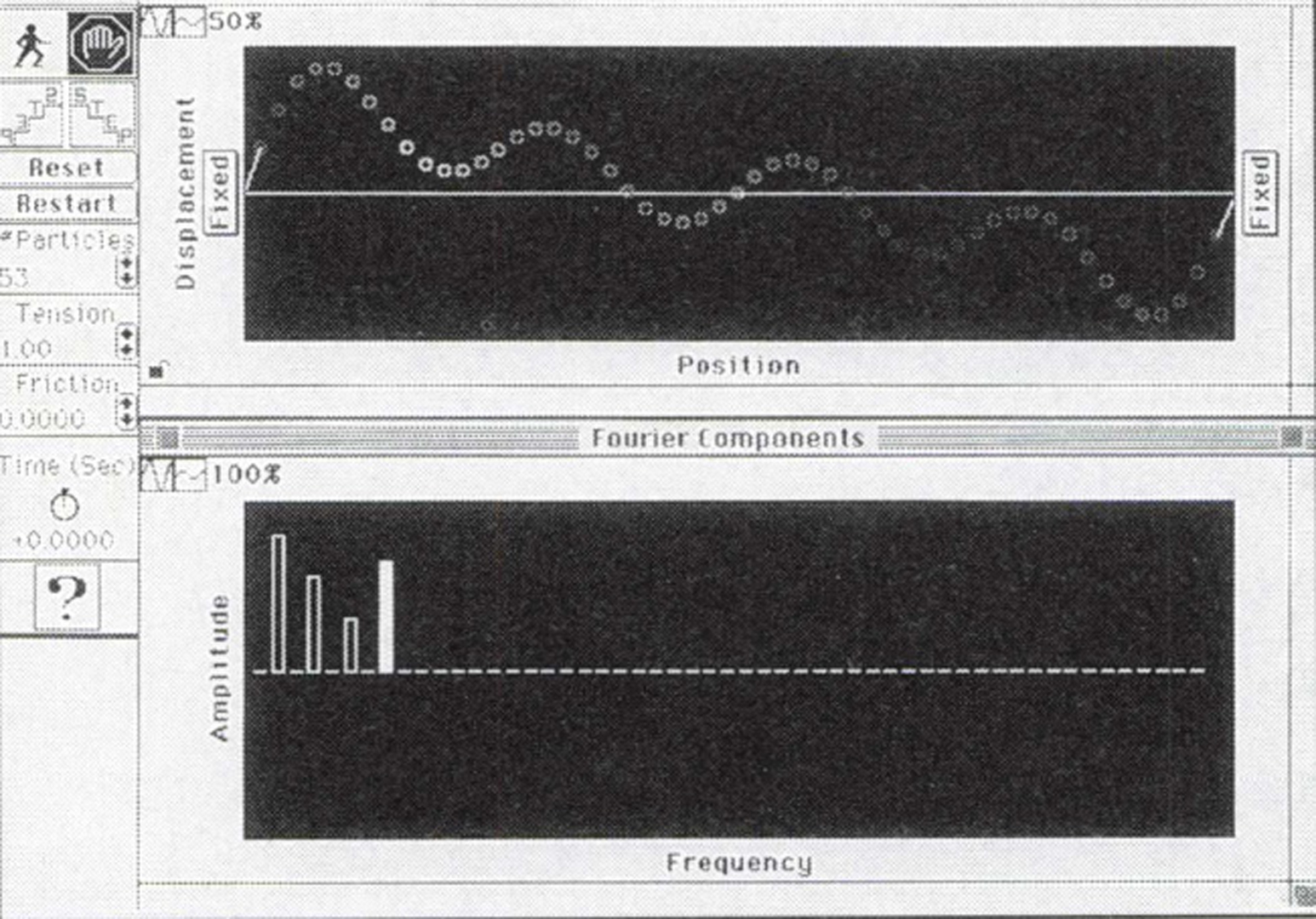“WaveMaker: A Computer Simulation for the Classroom of Tomorrow” by Deutsch
Conference:
Experience Type(s):
Entry Number: 48
Title:
- WaveMaker: A Computer Simulation for the Classroom of Tomorrow
Program Title:
- Tomorrow's Realities
Organizer(s)/Presenter(s):
Collaborator(s):
Project Affiliation:
- Harvard-Smithsonian Center for Astrophysics
Description:
The Science Education Department of the Center for Astrophysics has been working on interactive graphical computer simulations that can help students learn physics. One example, WaveMaker, exploits the type of technology that u should be available in the classroom five years from now. WaveMaker is a highly graphical and interactive computer simulation that is used to teach about waves and oscillations. Graphical representations like WaveMaker show promise of being an excellent way to connect physical systems to the sophisticated equations that describe them. With WaveMaker the user may gain intuitions on how waves work without having to learn all of the mathematics.
Why not simply use laboratory experiments to teach these ideas? Laboratory exercises are essential to learning science. They have limitations, however, especially when it comes to modern physics and other advanced topics, because the experiments are either too expensive, too difficult to carry out, or too difficult to visualize. Computer simulations can supplement laboratory exercise if they are designed to focus attention on formal variables, parameters, and frames of reference. A simulation can bring the student close to a process by eliminating irrelevancies, providing real-time plotting of data following the user’s specification of variables, and permitting the student to interrupt the event being represented. The students can then update decisions about the selection of parameters and the nature of the data being collected. The decisions needed to operate a simulation require the student to make predictions and confront his or her own theories.
Students in high school physics courses may have some experience with waves through classroom demonstrations. Phenomena such as reflection may be familiar to them, but most will possess many misconceptions about waves. In interviews with high school students, we have found that many believe:
? Waves are made up of matter traveling in the direction of wave propagation
? Wave packets can collide and annihilate each other (no conservation of energy)
? Superposition does not work
? Harmonic systems can vibrate at only one frequency
? Initial displacements will always produce two pulses propagating in opposite directions
What are the building blocks of understanding waves? Wave mechanics courses begin by treating the free oscillation of simple linear systems. A typical development might include:
? One degree of freedom: period is independent of initial displacement
? Two degrees of freedom: symmetric and anti-symmetric modes
? Many degrees of freedom: dispersive systems
? Continuous systems: non dispersive systems
Normal modes for uniform systems may be displayed and the student may
search for eigenstates of non-uniform systems. Various types of boundary conditions may be selected and they can give rise to reflection and interference. Superposition leads to Fourier analysis. Advanced topics that can be explored with WaveMaker include dispersion, driven systems, properties of reflection and transmission, and tunneling.
Many parts of the WaveMaker interface react with one another. When you move the Fourier graphs amplitude, the wave shape changes, and when you change the shape of the wave, the Fourier graphs change. When you touch the phase space diagram, the velocity and displacement graphs change. When you move the velocity or displacement graph, the phase space graph diagram changes. WaveMaker was a winner of the 1991 Computer and Physics Software Contest.
Hardware and Software
? Macintosh 11 w/ floating-point coprocessor and 1.4 Mbytes drive, 4 Mbytes of RAM, System 6.7 or later, 32-bit 0uickDraw
? 13″ color monitor, VCR and monitor
? WaveMaker





